A bit (or bosal) is like a carpenter’s hammer. It’s a tool, with selection affected by purpose and personal preference. One guy might like his hammer’s head to be a particular shape, or the handle to be a certain length, and the next guy might prefer something different. With bits, I have my preferences, and I appreciate a beautiful bit as much as the next person. But bits are made to do a job. I really believe that the simpler they are, the more effective they are.
[RELATED: Gimmicks or Good Gear]
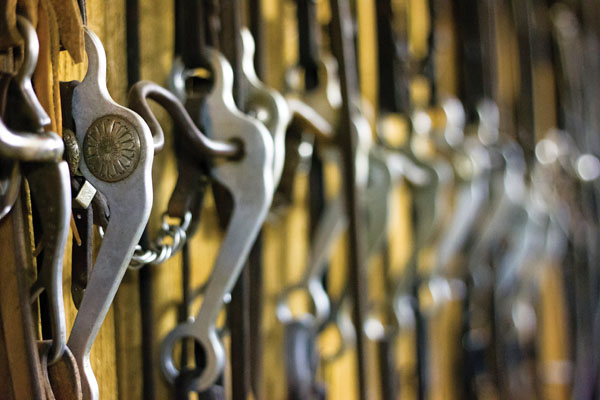
These seven items of headgear, bosals and bits included, are ones I probably use more frequently than anything else in the tack room. They encompass what I do in my training program. It doesn’t make any difference whether a horse is a reiner, cutter, or something else entirely. No matter what the event, a performance horse still has to be broke. It’s still the trainer’s job to get him responsive, soft, light, and supple.
I’ll describe the headgear, then explain why and how I use it.
Soft Hemp Hackamore
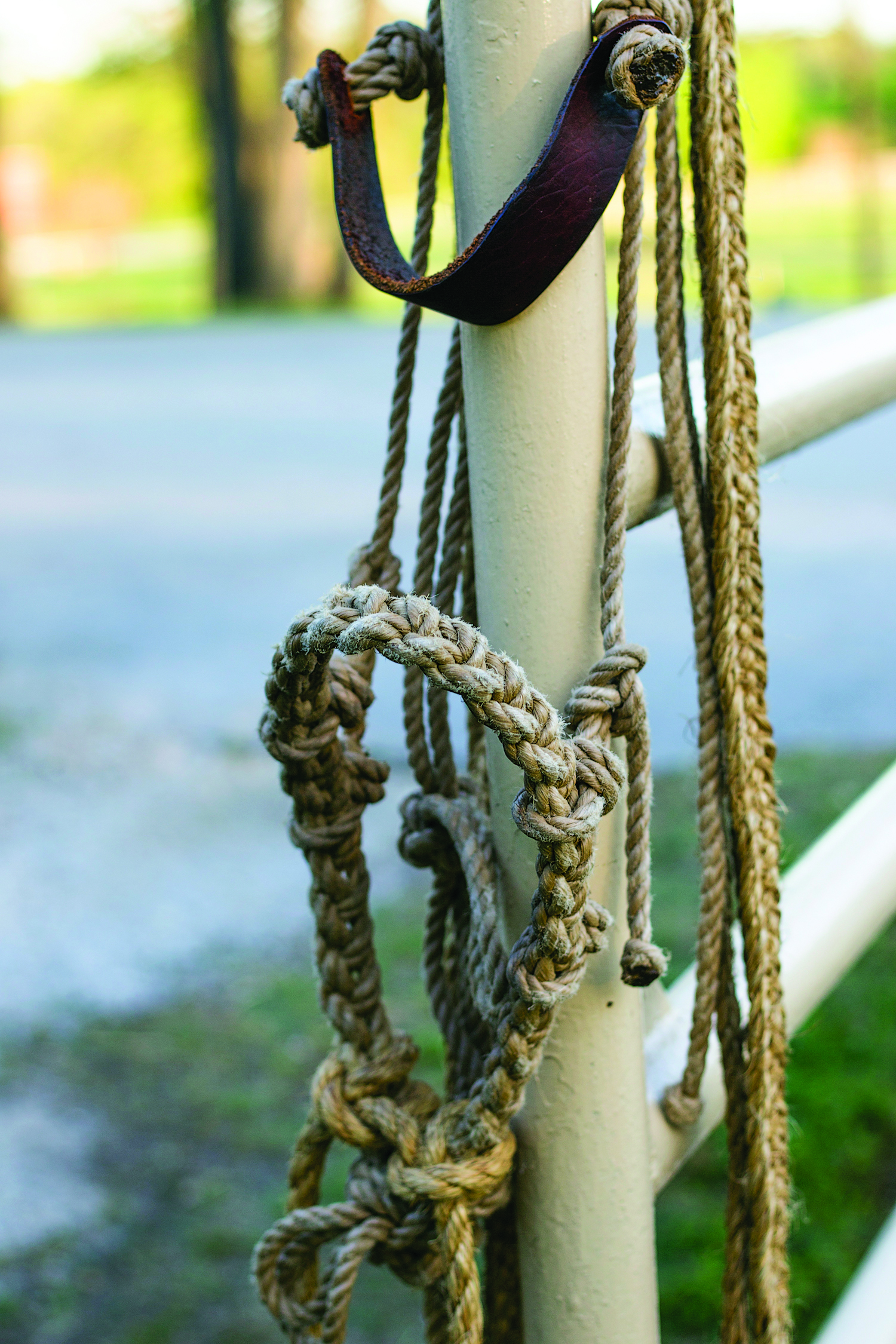
What it is: This consists of a headstall; bosal; and reins made of soft, pliable hemp.
Why/how I use it: When I first start colts in the round pen, I use a halter and a lead rope and let them go where they want, without giving them any direction. Then, I’ll put this soft hemp hackamore on them to gently start giving them a bit of direction.
After about six weeks of being ridden in the round pen and sometimes out of the round pen in this hackamore, they’ll start to tell me if they’ve got a hackamore nose or if they have a snaffle-bit mouth. I’m not too concerned just yet about which headgear they’ll prefer. But, a lot of times you can tell by conformation and appearance.
For instance, if a colt has a short, stubby, powerful neck, it might not be easy to get him to bend that neck, and you might want to start right off with a snaffle bit in the next stage of training. But if he has a long, slender neck, with his head hanging out fairly straight from the neck, he might be better suited to a hackamore. I’m going to switch all my colts back and forth a little bit, but I want them to be in this hemp hackamore, a rawhide hackamore, or a ring snaffle (see below) until I have a pretty good set of basics on them.
Rawhide Hackamore
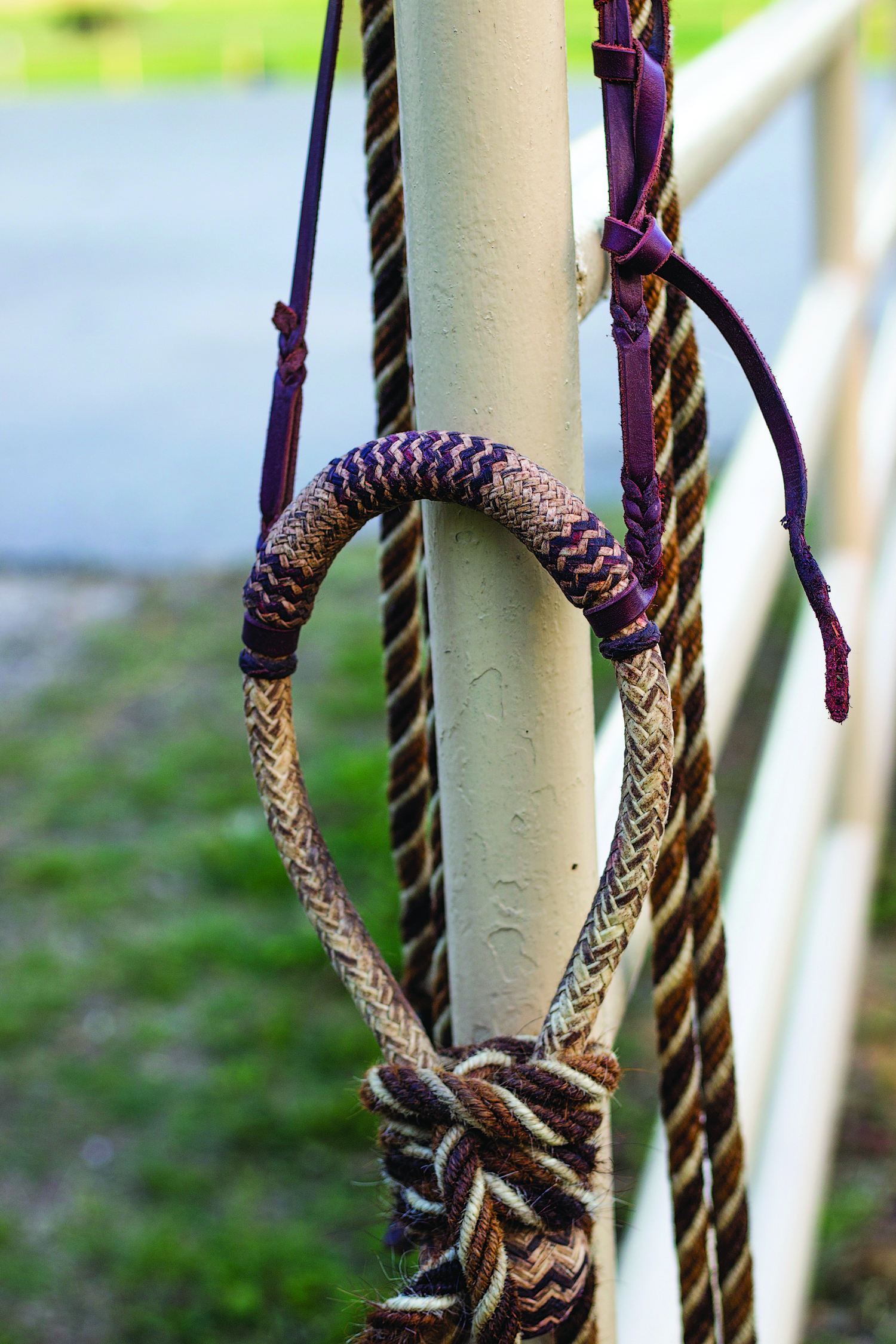
What it is: It’s a rawhide bosal connected to a hanger and mecate, or mane horsehair reins.
Why/how I use it: I think that the hackamore is the ultimate tool in the system of pressure and release. All you do is put a little pressure on a hackamore rein. If the horse leans on it for a moment or two, rather than getting into a pulling contest, you keep holding it a little while and then you release. And then you bump a little bit, and release. Eventually, you can get to where when you lift the slack out of the rein, the horse’s nose comes with it, and it’s a natural movement—one that hasn’t been affected by a curb chain.
Many people go to the long-shank bits too soon, and when they ask the horse to move laterally, he first dips his head and then makes that lateral move. By the time it takes to do that, the riders have missed their timing. You want the horse to move laterally promptly when you ask softly.
Jay Abcock, Bill Black, and Don Brown are all really good hackamore craftsman whose work I like. I don’t like a stiff hackamore at all. I much prefer a softer hackamore, for getting that soft response.
D-Ring Snaffle

What it is: A non-leverage bit with D-shaped rings and a smooth copper mouthpiece.
Why/how I use it: I use this bit a lot in the beginning of the horse’s training. It’s helpful for encouraging bend in a stiff horse’s neck, and some horses just respond to it better than they do to a hackamore.
If your horse just isn’t responding well to a hackamore, you’ll find that you can’t enter any kind of pulling contest. Your horse’s nose will go numb before you get a response. You’ll have to engage in that pull-and-release technique before you can regain control. If you’re not skilled with this kind of handling, you might be better off using a snaffle, where you can take hold of your horse’s mouth and hold until he responds. I also like O-ring snaffles and sweet-iron mouthpieces in early training.
John Israel Colt Bit

What it is: This leverage bit is characterized by its mullen port, sweet-iron mouthpiece, solid construction, and very short shanks.
Why/how I use it: If I have a horse that wants to chew and gap his mouth with a snaffle, I might put him in this bit. It hangs nicely in his mouth and gives the horse confidence. It has a nice taste, thanks to the sweet iron, and the horses seem to pick that bit up and hold it. I think it’s because this one is heavy, as opposed to the snaffle bit that’s a lot lighter.
Buster Welch-Style Grazing Bit
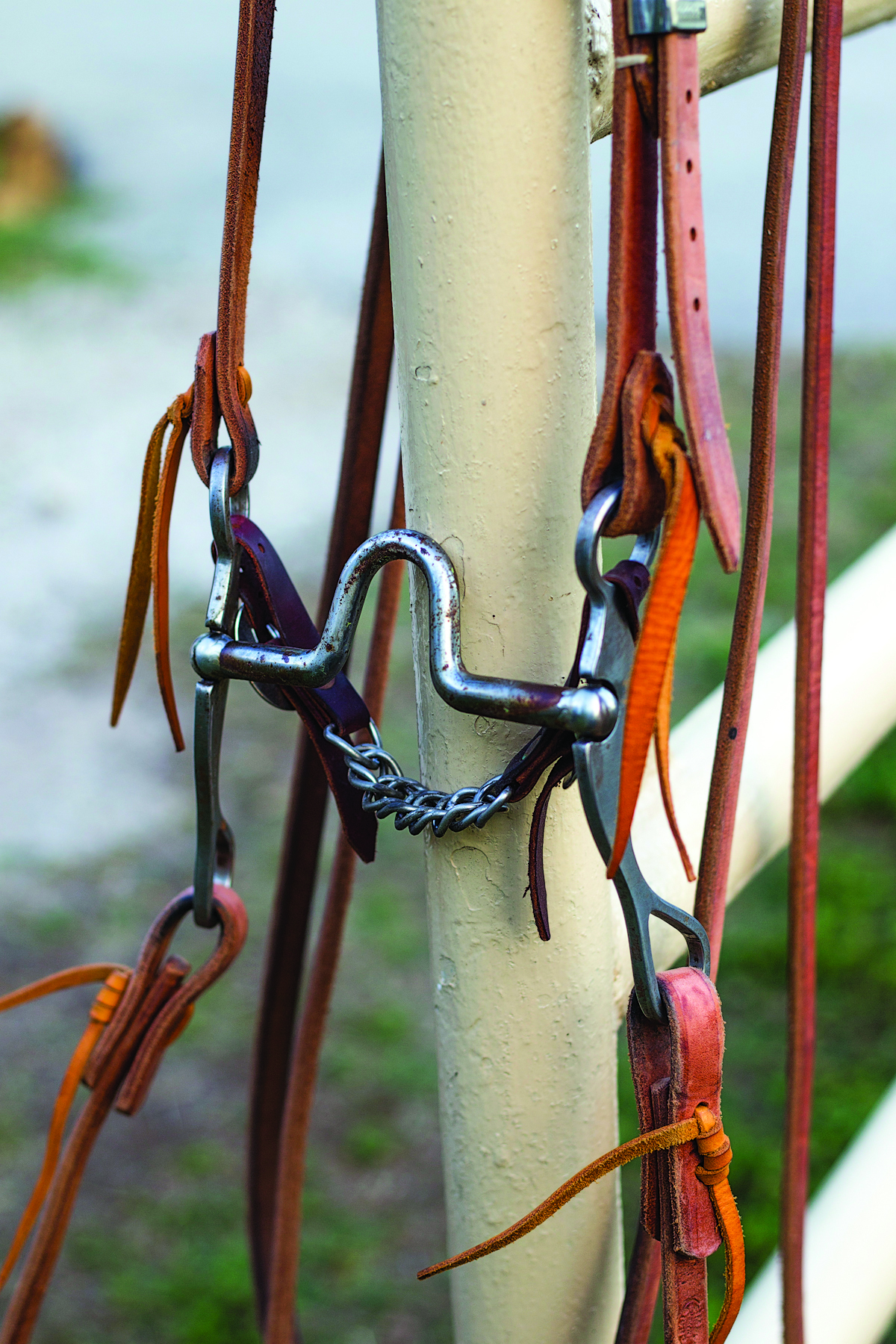
What it is: This is a leverage bit with a solid, high-port mouthpiece with aluminum cheeks.
Why/how I use it: Once a horse has a good set of basics, I might advance to a short-shank, Buster Welch-style grazing bit. I have two versions of this bit: one high port and one low port. The high-port bit is ideal for horses that have thicker tongues. Port height has nothing to do with severity; it has to do with the thickness of the horse’s tongue. If you’re trying to use a low-port bit on a thick-tongued horse, the tongue will prevent the bit from reaching the bars of the horse’s mouth.
Correction Bit, Lower Port
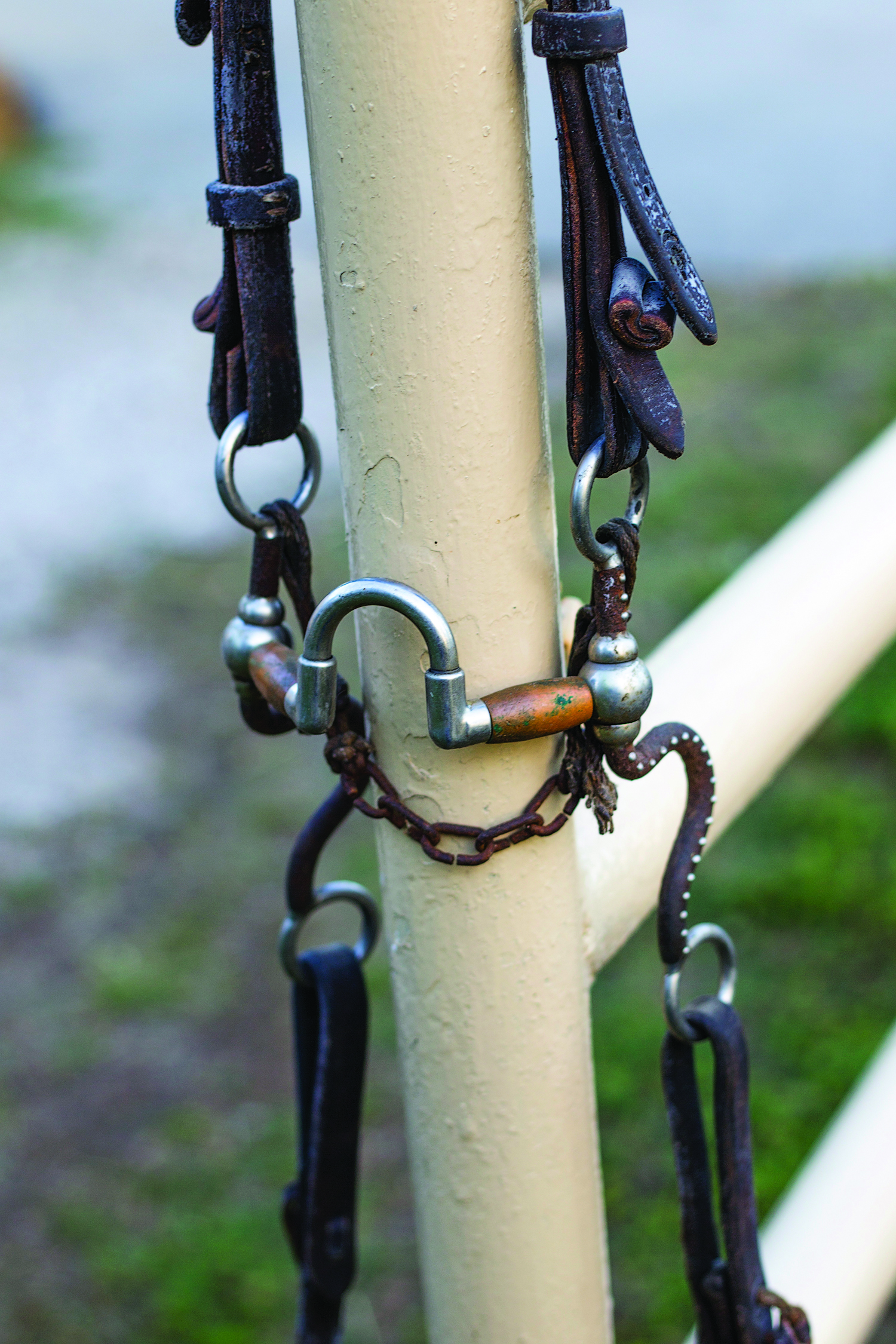
What it is: This leverage bit features a copper-accented mouthpiece with multiple points that move at the bottom of the port and at the cheek.
Why/how I use it: As a horse gets broke and becomes better trained, allowing your hand movements to become more subtle, he’ll move off of a light neck rein without you removing the slack. At that point, I’ll move a horse into either this correction bit or the swivel-port bit, above. This one has a rounded lower port, with a lot of flexibility. Between this one with a lower port and the one with a square port, it really depends on what feels good to the horse and what he needs at the time.
Correction Bit, Swivel Port
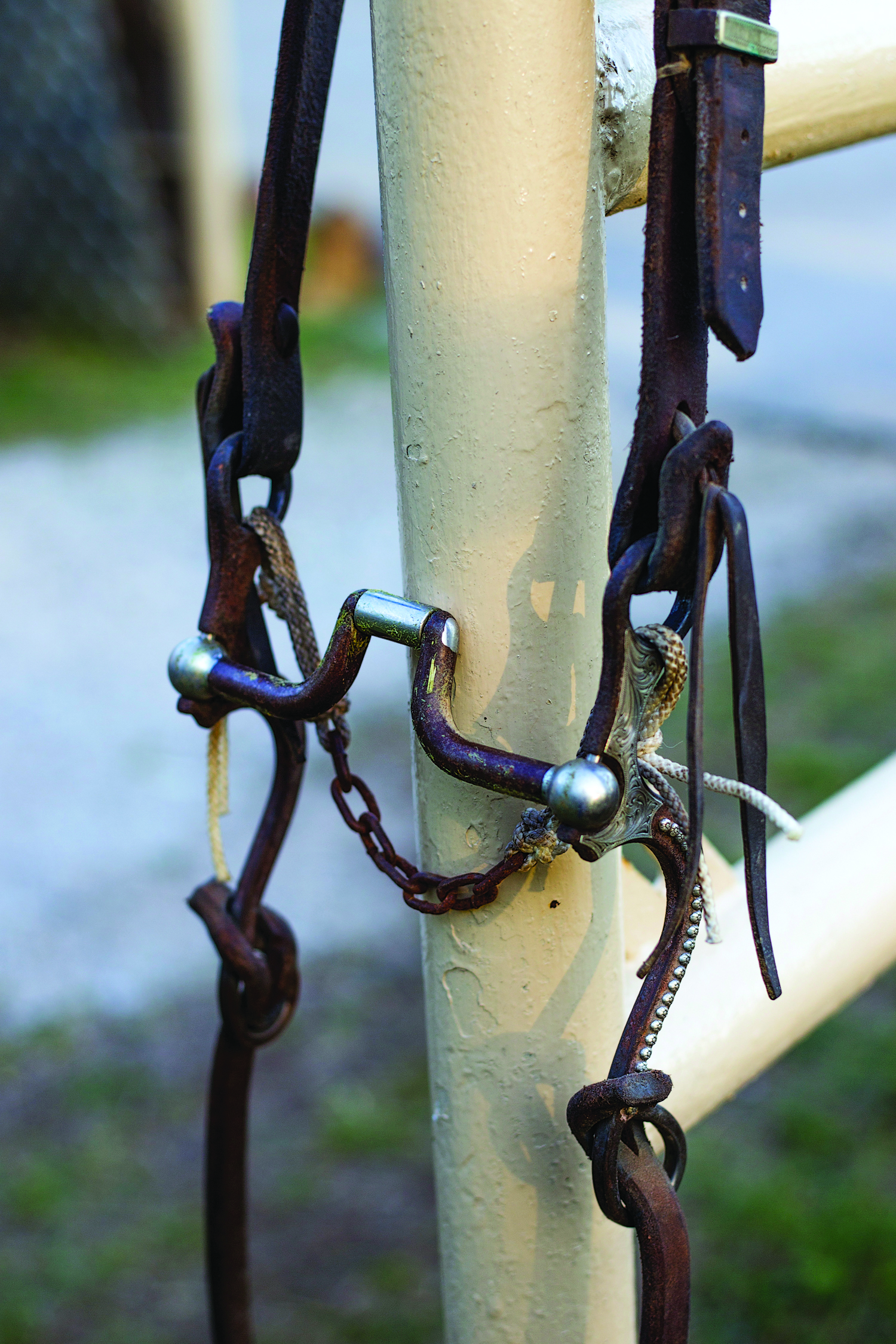
What it is: This leverage bit, by Tom Balding, has a squared port with a copper mouthpiece that moves at the top of the port.
Why/how I use it: By the time I get a horse into this bit, he’s riding around very nicely with two hands and guiding easily. When I’m ready to go to one hand, the horse needs to be a little bit lighter and a little bit more responsive, and that’s why I’d choose one of these two correction bits to just add some more finesse.
Dick Pieper is a longtime performance-horse expert. He’s a past president of the National Reining Horse Association, a futurity champion, and member of the NRHA Hall of Fame. He’s won multiple world championships and has held judges’ cards in NRHA, AQHA, NCHA, and NRCHA.






